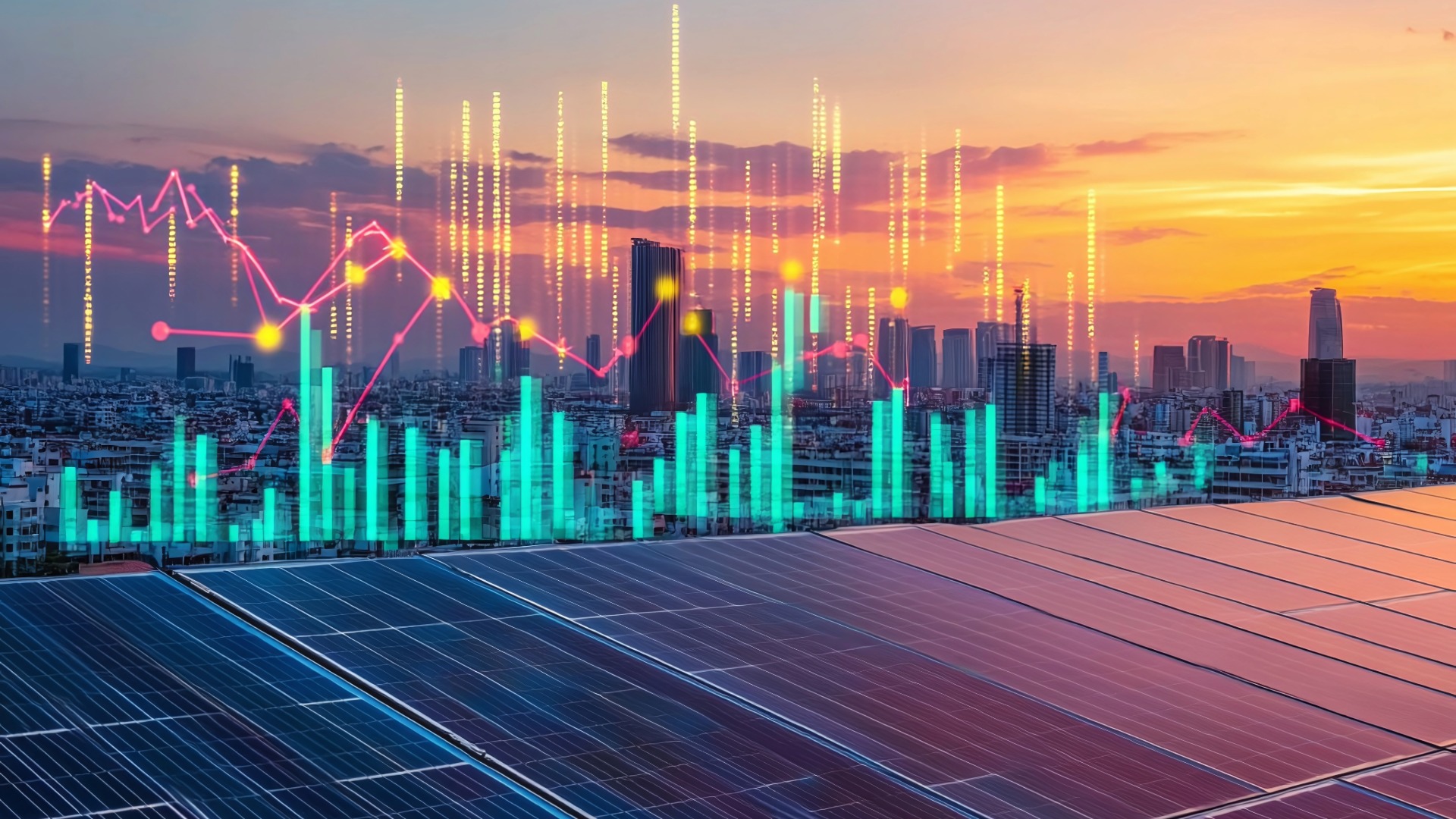Renewable energy procurement has evolved from a compliance checkbox into a strategic imperative that shapes organizational competitiveness. Fluctuating energy prices, regulatory pressure, and stakeholder expectations now require decision-makers to look beyond traditional sourcing methods. Academic institutions, commercial enterprises, and industrial operations face a common challenge: securing reliable, cost-effective energy while advancing measurable sustainability goals.
The solution increasingly involves hybrid energy strategies that combine on-site renewable generation with off-site Power Purchase Agreements (PPAs). This integrated approach creates predictable costs, operational resilience, and scalable progress toward decarbonization targets. Organizations that master this balance gain competitive advantages through reduced market exposure, improved budget certainty, and enhanced ESG performance.
Kb3 Advisors helps decision-makers address this complexity through expert-driven renewable energy procurement strategies. Our team translates market data into actionable insights, applies rigorous financial modeling, and tailors solutions to specific organizational priorities. The result is clarity in decision-making and confidence in immediate investments and long-term energy planning.
Understanding modern renewable energy procurement
Renewable energy procurement involves the strategic sourcing of clean electricity through on-site generation, long-term contracts, and market-based mechanisms. Effective procurement aligns supply decisions with financial performance, operational reliability, and sustainability mandates. This requires evaluating project feasibility, analyzing evolving market conditions, and forecasting cost outcomes across multi-year horizons.
The procurement landscape has matured significantly. Organizations that once deployed isolated solar installations or signed standalone PPAs now recognize the limitations of single-resource strategies. On-site systems alone may lack sufficient scale to meet total consumption needs. Relying exclusively on off-site contracts can leave organizations vulnerable to developer performance issues or market shifts.
The most effective approach integrates these resources within a unified plan. This evolution reflects growing sophistication in energy management and responds to intensifying pressure from government regulations and corporate ESG frameworks. Many institutions must now demonstrate verifiable emissions reductions and clean energy commitments, making comprehensive procurement strategies essential to compliance and business performance.
On-site renewable energy: strategic value and practical constraints
On-site renewable energy, including solar PV, wind systems, and battery storage, provides direct control over energy supply and creates tangible benefits for organizations with suitable facilities. Self-generation reduces purchased electricity volumes, protects against utility rate increases, and generates renewable energy credits that can be monetized or applied toward sustainability reporting. The physical presence of these systems also reinforces institutional commitment to stakeholders, supporting brand reputation and recruitment efforts.
Financial advantages accumulate over time. While upfront capital investment is substantial, operational costs remain low once systems are installed. Energy output directly offsets consumption, improving budget predictability and reducing exposure to wholesale market fluctuations. Battery storage adds further value by enabling demand charge management and providing backup power during grid interruptions.
Practical limitations constrain what on-site generation can achieve alone. Available roof space, structural load capacity, and site orientation determine maximum system size. Geographic location affects solar irradiance and wind resources, directly impacting energy production. Weather variability introduces performance uncertainty, and equipment degradation over 20 to 25 year lifespans requires ongoing monitoring and occasional component replacement.
Permitting processes, interconnection requirements, and financing structures add complexity that can delay project timelines. Organizations must also consider opportunity costs: capital allocated to energy infrastructure may compete with other strategic investments. These factors make on-site generation an important component of renewable energy procurement strategy, but rarely a complete solution on its own.
Kb3 Advisors evaluates the technical and financial fit of on-site projects within each client’s broader energy strategy. This approach supports measurable cost control and long-term operational goals without overextending capital resources or creating operational burdens.

Off-site power purchase agreements: access and structure
Off-site Power Purchase Agreements (PPAs) enable organizations to secure renewable energy from projects located beyond their property boundaries. These multi-year contracts define pricing, capacity, and performance expectations, giving buyers access to professionally managed renewable facilities without requiring on-site infrastructure development or ongoing maintenance responsibilities.
Two primary pricing structures dominate the market. Fixed-price PPAs establish a consistent rate throughout the contract term, typically 10-20 years, which supports accurate forecasting and eliminates exposure to energy market volatility. This structure appeals to organizations prioritizing budget certainty and risk mitigation. Market-indexed PPAs adjust costs based on prevailing energy prices, offering potential savings during low-price periods but introducing greater financial variability. The optimal structure depends on organizational risk tolerance, financial objectives, and market outlook.
Advantages and limitations
Off-site PPAs deliver distinct advantages. They provide scalability that on-site systems cannot match, enabling organizations to procure renewable energy volumes far exceeding what rooftop or on-site installations could generate. Large wind and solar farms operated by experienced developers produce substantial output with professional asset management, often at lower per-megawatt-hour costs than distributed generation. PPAs require no physical space at buyer facilities, making them ideal for organizations with space constraints, historic buildings, or leased properties.
These benefits come with considerations. Contract terms extend many years, limiting flexibility to adapt to changing business conditions. Performance depends on developer execution and project operation quality. Organizations must also address complex contract language covering force majeure, curtailment, credit requirements, and performance guarantees. Despite these factors, off-site PPAs have become essential tools for achieving renewable energy procurement objectives at scale.
Integrated Strategies for Optimal Financial Performance
The most effective renewable energy procurement strategies combine on-site generation and off-site PPAs to create balanced, resilient energy portfolios. This hybrid approach addresses the limitations of single-source solutions while capturing the complementary strengths of each resource type.
Cost Management Through Resource Diversification
Combining self-generation with contracted supply creates natural hedging against market volatility. On-site systems provide fixed-cost energy for portions of organizational consumption, while PPAs lock in rates for additional volumes. This diversification reduces dependence on spot market purchases during price spikes and establishes predictable energy costs across different economic conditions. Organizations gain improved financial control without eliminating all market exposure, which can be advantageous during periods of declining energy prices.
Operational Resilience and Supply Security
On-site solar and battery storage strengthen resilience by maintaining power during grid outages and reducing demand during peak-pricing periods. This local generation capacity supports critical operations and can prevent costly disruptions. Off-site PPAs complement this resilience with consistent, large-volume supply that meets broader consumption needs beyond what distributed generation can provide. The combination creates immediate operational continuity and long-term supply adequacy.
Quantifiable Results from Integration
Organizations implementing coordinated renewable energy procurement strategies consistently achieve measurable financial improvements. Industry data shows that combining on-site generation with strategically structured PPAs can reduce total energy costs by 15-25 percent within two years of full implementation. These savings result from optimized capacity sizing, effective contract negotiation, and precise alignment between energy supply and consumption patterns.
Success depends on sophisticated analysis. Effective procurement requires forecasting consumption trends, evaluating site-specific performance characteristics, and structuring contracts that balance risk and opportunity. Kb3 Advisors applies advanced data modeling to identify optimal resource combinations. Each plan delivers immediate cost reductions while supporting sustained return on investment.
Financial Analysis and Performance Measurement
Rigorous financial modeling forms the foundation of effective renewable energy procurement decisions. Organizations must understand upfront capital expenditures (CAPEX) and ongoing operating expenses (OPEX) to evaluate true project economics and compare alternatives accurately.
On-site renewable installations require substantial CAPEX for equipment, installation, and interconnection, but generate relatively low OPEX over their operating lives. Off-site PPAs reverse this structure, requiring minimal upfront investment while creating long-term contractual obligations that function as operational expenses. A well-designed energy portfolio balances these cost profiles to optimize cash flow, tax treatment, and financial statement impacts.
Optimizing the outcomes
Comprehensive ROI assessments must incorporate avoided costs (the expenses organizations would have incurred through conventional utility purchases) along with available financial incentives. Federal investment tax credits, accelerated depreciation, state-level renewable energy grants, and renewable energy certificate revenues all contribute to project value and can significantly shorten payback periods.
Modeling should extend across the full asset life and contract term, accounting for degradation curves, maintenance requirements, utility rate escalation, and market price forecasts. This long-term perspective reveals the true economic impact of procurement decisions and enables accurate comparison between competing strategies. Regular monitoring against projected performance allows organizations to identify deviations early and make informed adjustments to optimize outcomes.
Strategic Partnership for Sustained Success
Successful renewable energy procurement requires expertise that spans energy markets, financial analysis, contract negotiation, and project implementation. Kb3 Advisors combines these capabilities to develop custom strategies that align with immediate cost objectives and long-term sustainability commitments.
Our approach begins with comprehensive analysis of consumption patterns, site characteristics, and organizational priorities. We apply predictive modeling to identify optimal combinations of on-site and off-site resources, size capacities accurately, and structure contracts that balance risk and performance. Transparent reporting keeps stakeholders informed throughout implementation, while our client-first advisory model delivers procurement plans that serve specific organizational needs.
With proven experience serving diverse organizations across multiple regions and market conditions, Kb3 Advisors develops roadmaps that connect energy procurement strategy to operational growth. Each plan integrates financial control, contract optimization, and sustainability impact, giving decision-makers confidence in current investments and future energy planning.
Partner with Kb3 Advisors today to create a renewable energy procurement strategy that delivers measurable savings and builds sustained success as energy markets continue to evolve.
Sources
- The Multiple Benefits of Energy Efficiency and Renewable Energy. epa.gov. Accessed October 6, 2025.
- Existing and Potential Corporate Off-Site Renewable Procurement in the Southeast. nrel.gov. Accessed October 6, 2025.
- Best Practices Guide: Economic & Financial Evaluation of Renewable Energy Projects. theprif.org. Accessed October 6, 2025.


